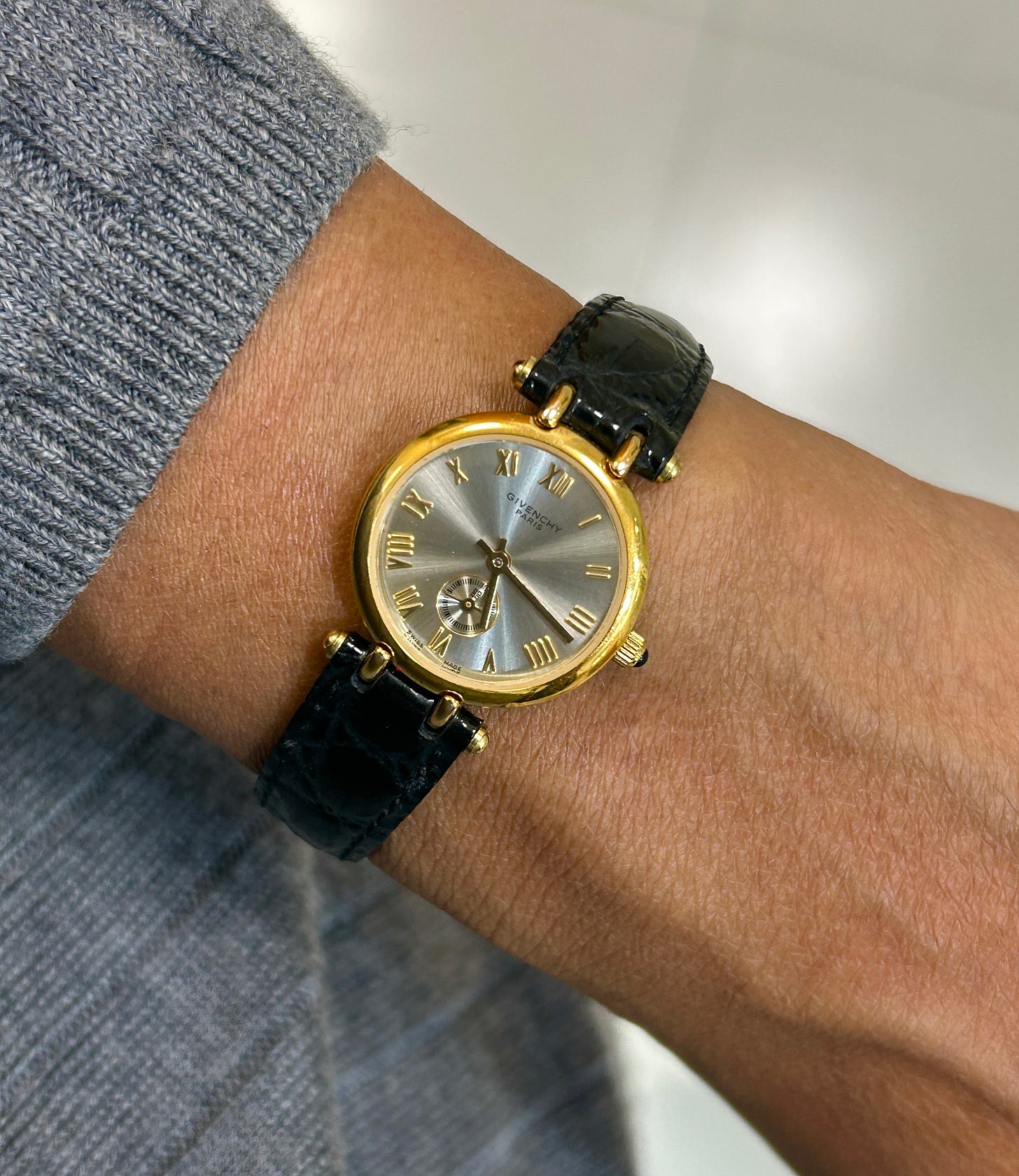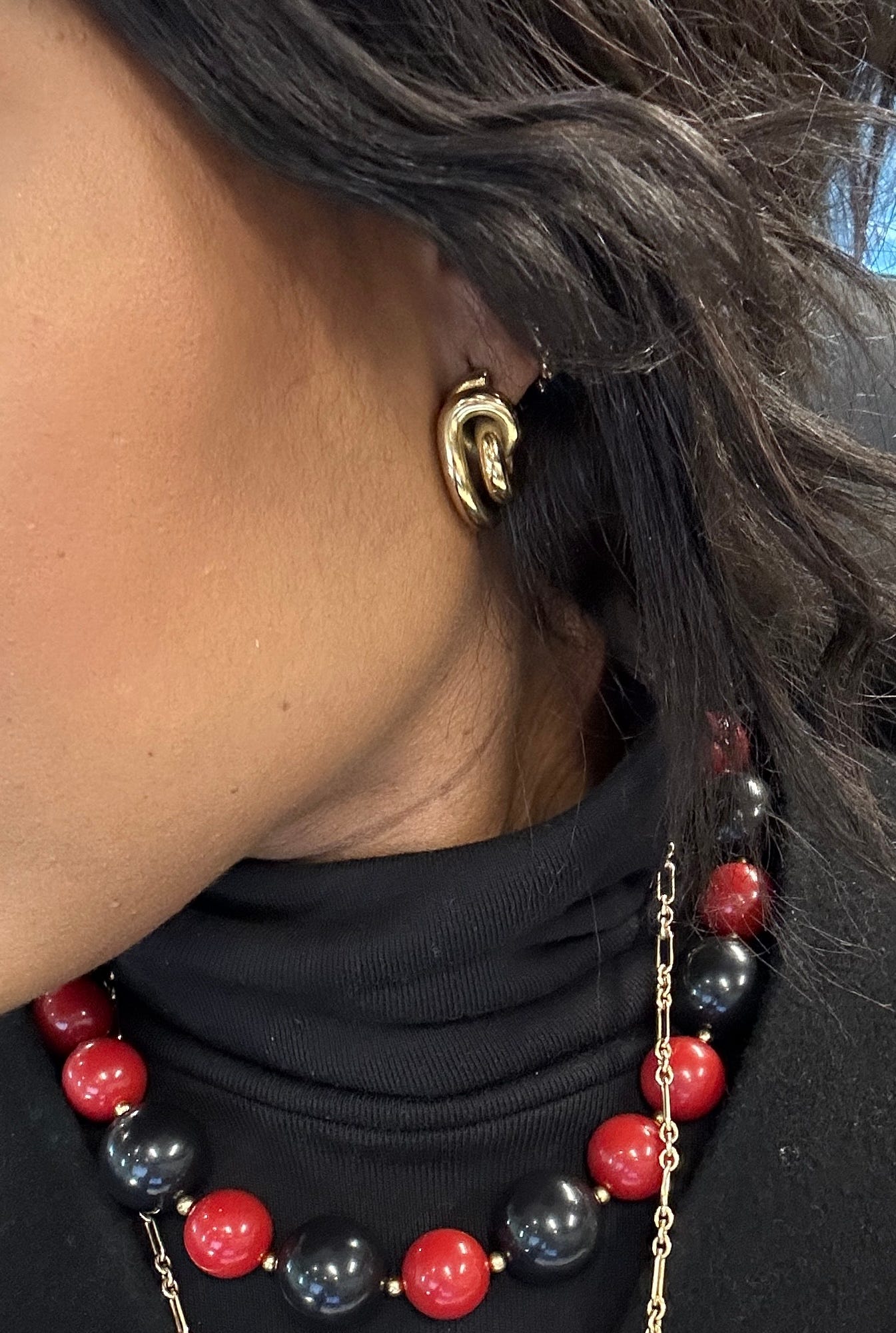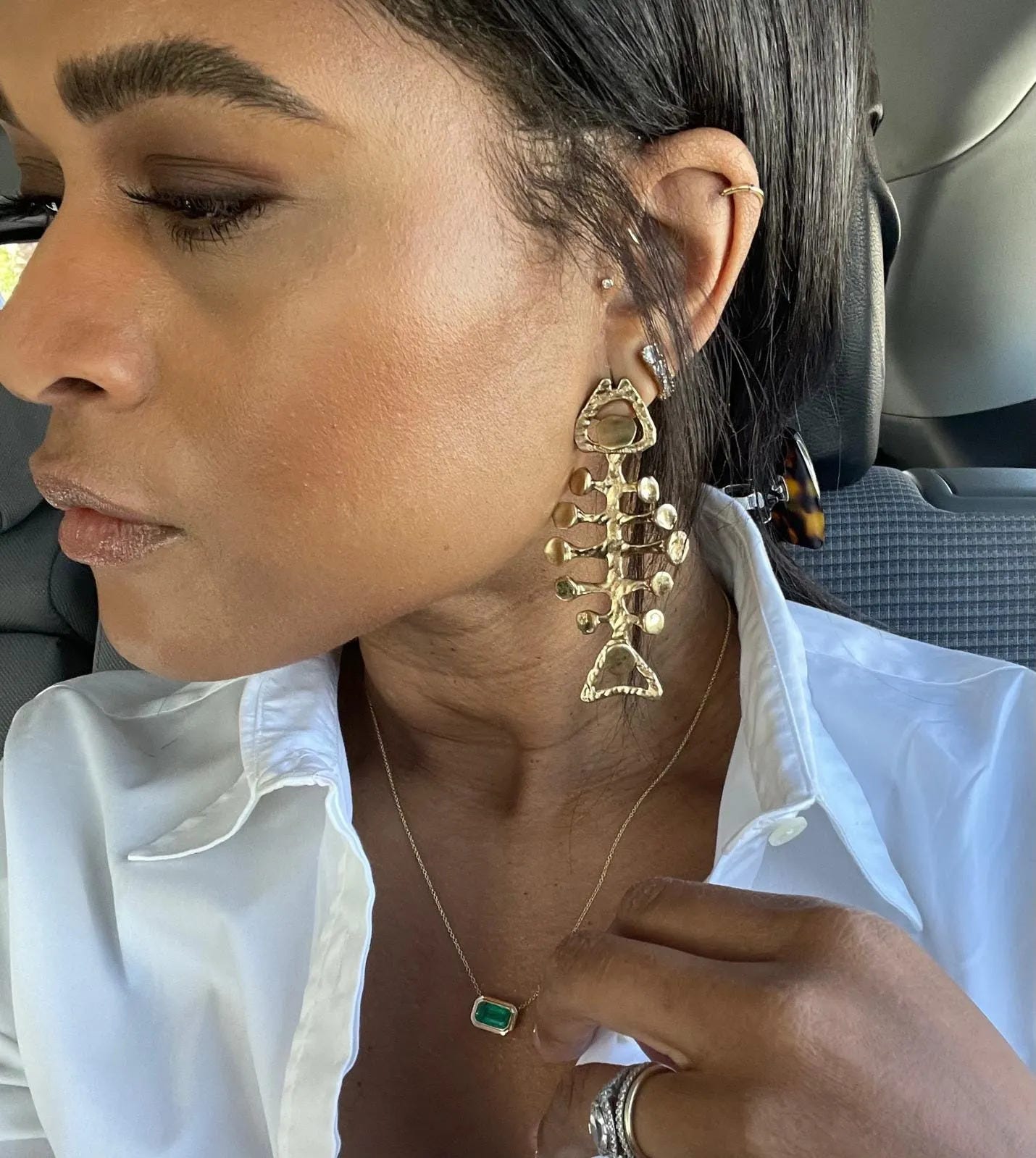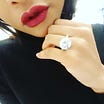A Jewelry Insider Shares Her Secrets
Where to get your jewelry repaired in NYC, the best online shopping keywords, and other pro tips.
I first connected with Veronica at an event I was hosting last summer. As is often the case with a fashion “meet cute,” her outfit immediately caught my eye from across the room — specifically her accessories: a spiraled silver brooch, a collection of choker-length necklaces, and a beaded bag charm looped around the handle of her chocolate brown tote. I wasn’t surprised to learn that she worked in the jewelry industry — and I’ve been a subscriber of her enlightening newsletter Vejeweled ever since.
I’m so grateful she agreed to let me pick her brain about some of my (and your!) most pressing questions about jewelry, from the best way to approach repairs to her favorite sellers on Etsy. Her as-told-to interview is below.
Building a jewelry collection
When I first started collecting, I had this purist mentality. I thought I should only be collecting fine jewelry. That’s what I was trained to think of as “valuable.” My collection began very meagerly as a result, because I couldn't afford most fine jewelry. Once I stopped overlooking costume jewelry, my collection — and the thrill of the hunt — got much more fun. A lot of well-made costume jewelry holds value, too, by the way. Maybe not intrinsic value in terms of materials, but if it’s attached to a notable maker, it retains value over time. I recently bought a pair of vintage Anne Klein earrings. I’ve also been collecting pieces from designers like Napier, Trifari, Monet — brands that are known for beautiful, high-quality costume pieces and superior craftsmanship.
Once I could afford a bigger investment, my first big jewelry purchase goal was a watch. I wanted a real watch. I ended up buying a secondhand Cartier Tank Solo in stainless steel. That was my first major purchase. And from there, my watch collection evolved. I recently added a vintage Givenchy gold-plated watch on a leather strap that I found on Etsy. It’s not a “watchy-watch,” but I love it.
A substantial gold chain bracelet for layering was another staple piece I looked for when I first started collecting — something with a wider link. And an everyday earring. Lately, my go-to earrings are a pair of vintage 90s gold-plated hoops with a unique curly-Q design that I found on Etsy.
In general I’m big on statement pieces. Substantial earrings, long pendant chains from the 70s, modernist and brutalist brooches — I’m always wearing a brooch these days. I’m currently pregnant, so I’ve leaned on them even more lately because they add something extra when my clothing options are more limited. Jewelry has always been my way of expressing how I want to feel that day. Putting it on is my favorite ritual every morning. It brings me back to being a little girl playing with my grandmother’s jewelry box.
My dream piece is a vintage Van Cleef & Arpels zodiac pendant. I’m a Leo, so I’ve been hunting for one from the 70s, specifically one designed by Georges L’Enfant. But they’re rare and very expensive, so for now, I just admire from afar when I do come across one. I'm also hoping to acquire pieces by Monies, Lisa Eisner, and Art Smith (an artist jeweler), and I regularly browse the secondary market for those designers. Robert Lee Morris, another artist jeweler, is a favorite as well. I'm always searching for his pieces and have added several to my collection.
I think it’s helpful to remember that great jewelry exists at every price point. That takes some of the pressure off, so you can focus on buying what you love, within your budget.
Shopping for jewelry online
Two of my favorite online spots for jewelry are Ruby Lane (an often-overlooked gem! I did a holiday gift guide in collaboration with them) and 1stDibs. Lately, The RealReal has been a goldmine for contemporary finds. I just picked up a pair of Tory Burch brutalist asymmetrical earrings — they're pure Lisa Eisner vibes. And a vintage St. John cuff that's been getting a lot of wear.
I also love Etsy. I’m always discovering and bookmarking new sellers. A few that I’ve recently purchased from are: WhatIsThing (they also have a booth most Saturdays at the Chelsea flea market! I've been buying from them for a while now; they have a great eye and always find obscure pieces), VintageNMode, AlexandersBoutiqueUS, FinchleyWatches (where I found the vintage Givenchy watch), DorisJeansGems, and my newest discovery BakeliteBabyDesign (for fun, colorful Art Deco bakelite brooches).
Playing around with different keywords is essential (I recently wrote about this at length in a newsletter about my "Sourcing Secrets”). "MCM" (Mid-Century Modern) is search term staple, and also "VTG" (Vintage), as sellers often use abbreviations. I routinely search by style/period (brutalist, modernist, abstract), descriptive adjectives (statement, chunky), and specific vintage costume makers (Napier, Monet, Trifari). I also include "Italian" or "French" in my searches, as these regions are celebrated for their exceptional craftsmanship and design.
Repairing and reviving old jewelry
I think everyone should have an ultrasonic cleaner at home. You can buy a small one on Amazon, and they’re not super expensive. It’s a little machine where you put in water and jewelry cleaning solution, and it shakes all the dirt out of your jewelry. Just be mindful that there are certain stones you can’t put in, like emeralds.
If you need a legitimate repair, it’s best to find someone through a referral. If that’s not an option, I’d suggest Googling to find a local, mom-and-pop or family-owned jewelry store near you. Jewelry is so personal, and repairs should be, too. Ideally, you’re developing a long-standing relationship with any jeweler you’re trusting with your pieces.
For repairs and custom work in New York, I recommend: Christina Designs who are lovely and do excellent work; Cluster Jewelry, a multigenerational business (three generations, I believe) where Kevin, the son, is frequently seen on "Antiques Roadshow" and is a hoot; Jacob Watch Repair on 47th Street; and Dr. Jeweler, who has been helpful with delicate vintage costume pieces and restringing beaded necklaces.
Designing an engagement ring
My husband and I designed my engagement ring together with a friend at Erstwhile — a brand that specializes in antique, vintage, and hand-crafted engagement rings. I wanted something unique that didn’t feel too modern. We did this really beautiful reproduction of an Art Deco style that was very popular in the 1920s and early 1930s, with hand-engraved filigree. It has a moval-cut stone — a mix between marquise and oval — set east-west across the finger. The stone is antique, chunky, imperfect, and full of charm. It’s not super white or clean. It's an old stone, cut back when everything was done by hand, so it's a little bit “off” — but that’s what I love about it.
My biggest advice for people looking for an engagement ring? Don’t buy into the hype about carat size, internal flaws, or even the GIA report. The average person —yourself included, probably — isn’t going to care about those things or even notice. What they will notice is whether it has character — and whether it does or doesn’t look like everything else out there.
That said, you do want to pay attention to the setting. A stone that sits too high is going to get banged around. You also want to consider materials. Gold is more malleable, so if you want something really secure, I’d recommend platinum. Most importantly, think about how it feels. Is it comfortable? Does it catch on things? If you’re wearing it every day, these things matter way more than perfect clarity.
Learning about jewelry IRL
A lot of people think that jewelry trade shows aren’t open to the public, but that's actually not the case. For example, in New York, there's a vintage jewelry and watch show at the pavilion down in Chelsea, and anybody can buy a ticket. Same for the shows that happen at the Park Avenue Armory. Anybody can go. I really recommend doing that — get up close to pieces, ask questions, try things on. People in this industry love to engage and explain things to you, whether you’re a jewelry novice or expert.
And it’s not just New York. There are tons of these shows in various cities across the country — Los Angeles, Palm Beach, Nashville, Tucson (home to the legendary Gem Show). Look at what’s coming up in your area. This is the best way to learn about jewelry. You really learn what a well-made piece of jewelry should look like by seeing and feeling it up close. Oh, and that reminds me — my number one piece of advice: always look at the back of jewelry. The best pieces are designed with care from every angle. Even the ones that aren’t always visible.
Thank you, Veronica! If you enjoyed what you read here, I recommend subscribing to Veronica’s Substack Vejweled. You can also email her at vvalentinenyc@gmail.com if you ever want help sourcing antique and vintage jewelry or gemstones.
xo Harling














So refreshing to see sources, people, and ideas you don’t read about in every other Substack. This is jewelry content I will actually use! Thank you Harling and Veronica for an outstanding post that really feels like it’s written for its audience, and not just for the affiliate links.
Love this! Obsessed with her jewelry box!! Have been on the hunt - does anyone know where it might be from?!